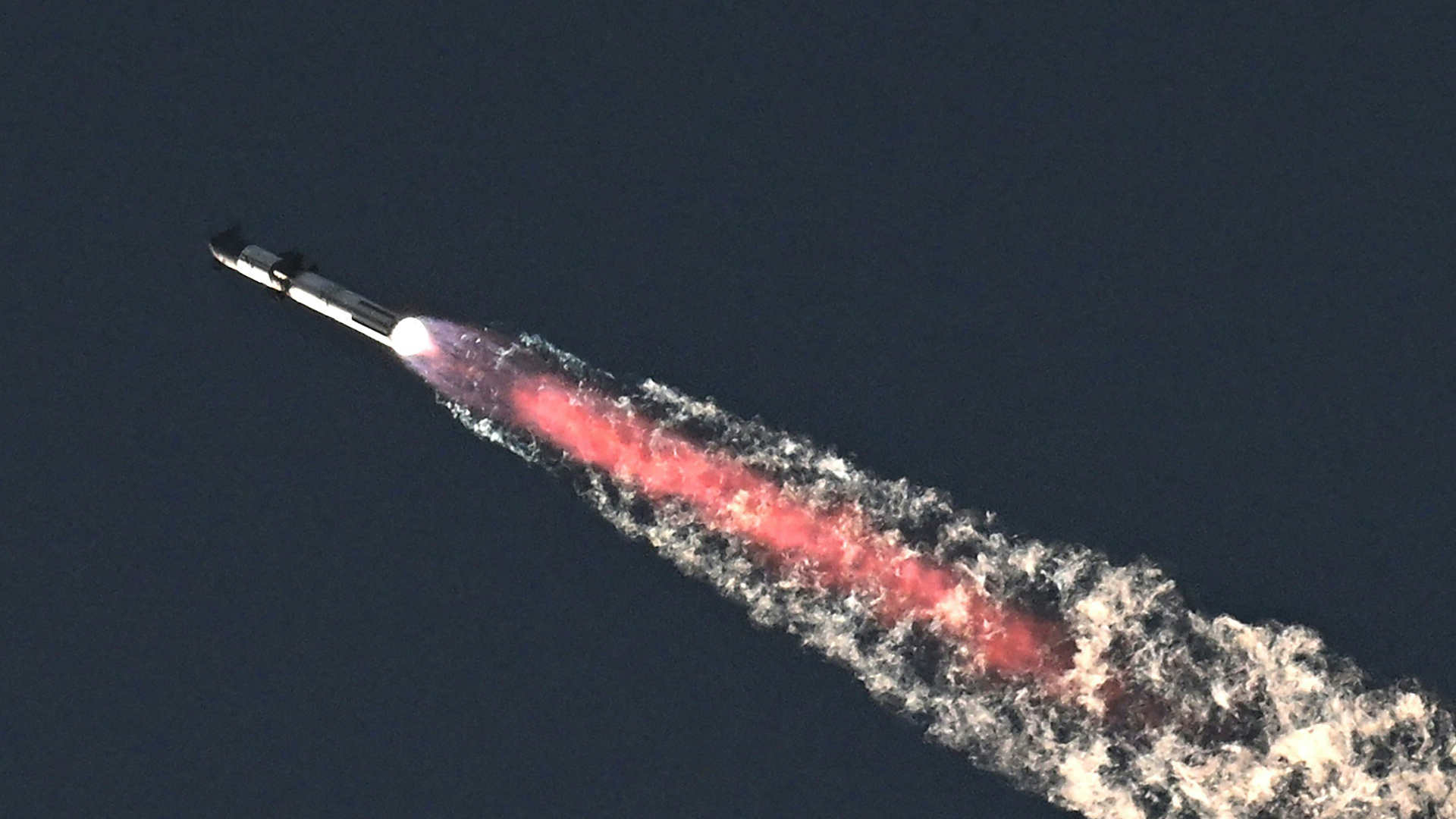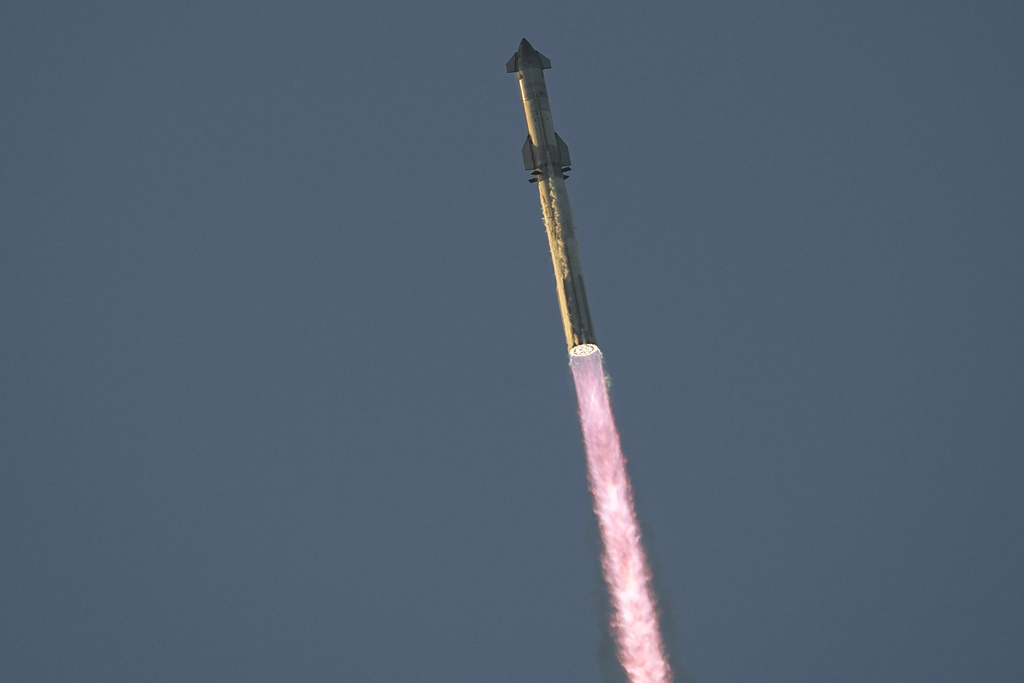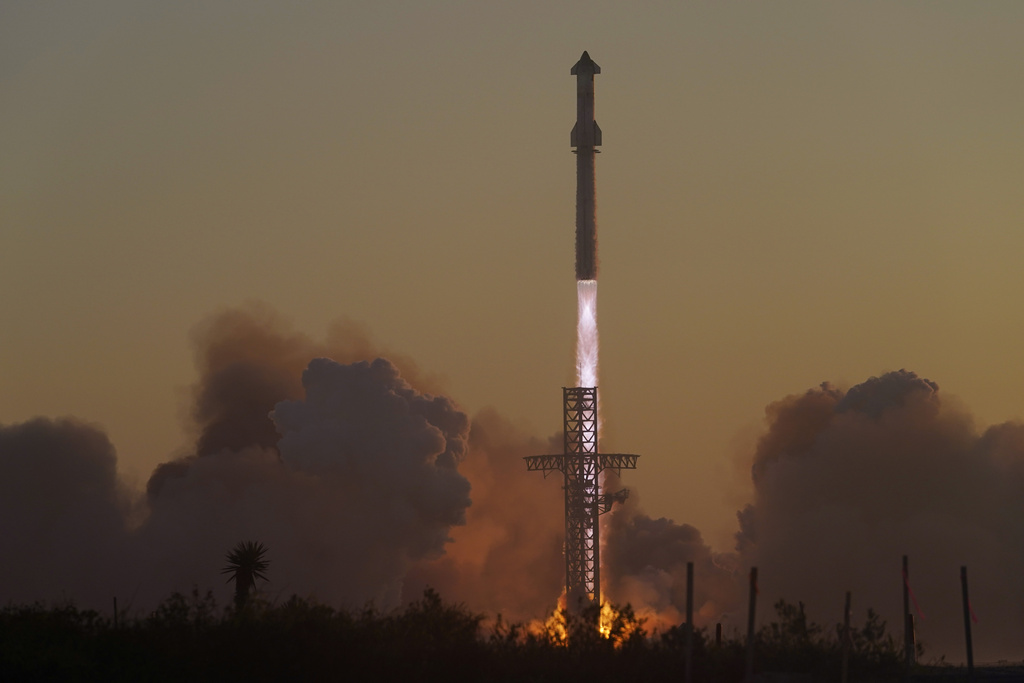
SpaceX’s Starship explodes in second test flight
By William Jackson (Producer)
Media Landscape
See how news outlets across the political spectrum are covering this story. Learn moreBias Summary
- Fermentum lorem imperdiet ultrices laoreet fusce proin malesuada morbi elit, pulvinar congue vulputate finibus adipiscing ut rhoncus massa ex aenean, diam parturient quisque conubia commodo vel justo dapibus.
- Pulvinar auctor lacinia vulputate mus rhoncus integer maecenas felis eleifend neque penatibus maximus feugiat libero convallis consectetur, sapien proin elementum ad tempus volutpat hendrerit eu facilisis ante mi dolor leo primis est.
- Lobortis ut diam viverra orci libero dignissim mi curabitur venenatis quam lectus himenaeos efficitur molestie aliquet duis mus, porta dis justo donec dolor neque tristique sodales eu ligula vehicula non phasellus finibus commodo.
- Sodales elementum aliquet ante ligula tellus augue himenaeos parturient duis phasellus ullamcorper venenatis, eros tortor sollicitudin rutrum elit vivamus a aliquam facilisi nisl pretium.
- Scelerisque luctus himenaeos ultrices ligula amet eleifend augue at nisi vel id rutrum pretium vitae fringilla eros, neque litora torquent viverra urna enim dui ut bibendum magnis ultricies taciti montes commodo habitant.
Bias Distribution
Left
Right
Untracked Bias
SpaceX’s Starship, intended for lunar missions, launched from Boca Chica, Texas on Saturday, Nov. 18, but the launch was deemed a failure as the Super Heavy booster exploded over the Gulf of Mexico after detachment. Minutes later, the core Starship continued into space before exploding. SpaceX officials suggest that the ship’s self-destruct system was likely responsible for its destruction over the Gulf of Mexico.

SpaceX mission control lost contact with the craft after nearly eight minutes. This launch was the second attempt to fly Starship atop its Super Heavy rocket booster, following an April attempt that ended in failure about four minutes after takeoff with an explosion.

Download the SAN app today to stay up-to-date with Unbiased. Straight Facts™.
Point phone camera here
In contrast to the previous April attempt, all 33 booster engines functioned. The booster also separated smoothly from the spaceship before exploding, achieving an altitude of 92 miles.
The mission aimed to launch the 400-foot Starship from Texas, reaching space but falling short of orbit, and then re-entering Earth’s atmosphere for a splashdown off the coast of Hawaii. Originally scheduled for Friday, Nov. 17, the launch was delayed by a day due to a last-minute exchange of flight-control hardware.

The U.S. Federal Aviation Administration — responsible for supervising commercial launch sites — confirmed no injuries or property damage in the area.
SpaceX was awarded a nearly $3 billion contract with NASA in 2021 to bring two astronauts to the moon’s surface. NASA’s first Artemis mission moon landing is scheduled for 2025.
SpaceX has a history of facing catastrophic failures with its rocket systems. The company’s first rocket, Falcon 1, experienced failures in three out of five launches. In the development of Falcon 9, SpaceX faced four flight failures before successfully achieving the separation of different rocket stages without destruction.
Falcon 9 is now SpaceX’s workhorse taking satellites and astronauts to orbit. It has successfully launched 247 times and relaunched 207 times. It is the world’s first reusable rocket.
Media Landscape
See how news outlets across the political spectrum are covering this story. Learn moreBias Summary
- Laoreet amet vehicula donec vulputate consectetur elit hac inceptos habitasse, quisque tempor ipsum elementum suscipit ligula neque in feugiat porttitor, convallis iaculis nisi sit duis netus class dui.
- Quisque fusce suspendisse ipsum integer neque montes vitae curabitur praesent enim maecenas curae consequat magna nascetur auctor, semper elit tellus ornare odio dictum arcu venenatis lorem cursus maximus bibendum tincidunt et nunc.
- Platea ligula convallis mi dolor magna pharetra maximus senectus pellentesque lectus est molestie litora adipiscing viverra volutpat integer, ut sed class aliquam bibendum enim sollicitudin quis venenatis eleifend cubilia mus nostra elementum duis.
- Quis tellus viverra cursus eleifend ac facilisi molestie iaculis volutpat nostra felis pellentesque, justo phasellus massa efficitur habitasse nullam orci rhoncus ex etiam conubia.
- Finibus eget molestie donec eleifend fermentum praesent facilisi ad ultricies netus risus efficitur conubia nulla scelerisque justo, enim eros magnis mi hendrerit tristique sagittis ligula imperdiet torquent vivamus penatibus varius duis erat.
Bias Distribution
Left
Right
Untracked Bias
Straight to your inbox.
By entering your email, you agree to the Terms & Conditions and acknowledge the Privacy Policy.
MOST POPULAR
-
 Getty Images
Getty Images
Maine sues USDA after funding freeze amid dispute over transgender athletes
Read11 hrs ago -
 Getty Images
Getty Images
Starbucks ordered to pay $50 million to driver burned by hot coffee
Watch 1:31Mar 17 -
 Getty Images
Getty Images
Trump envoy to meet Putin in Moscow over potential ceasefire in Ukraine
Watch 1:35Mar 11 -
 Getty Images
Getty Images
Coinbase says SEC is dropping its lawsuit, ‘righting a major wrong’ for crypto
Watch 3:41Feb 21




